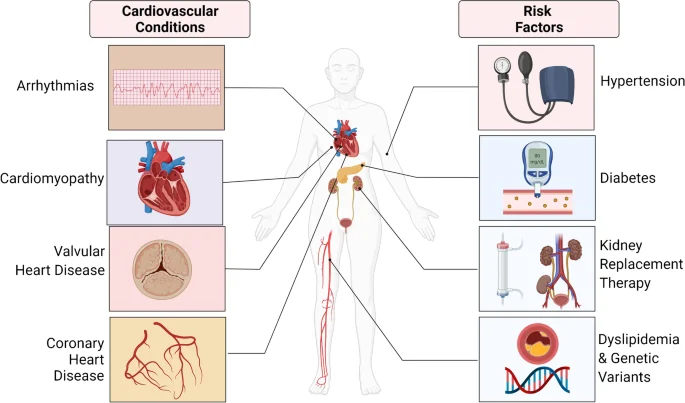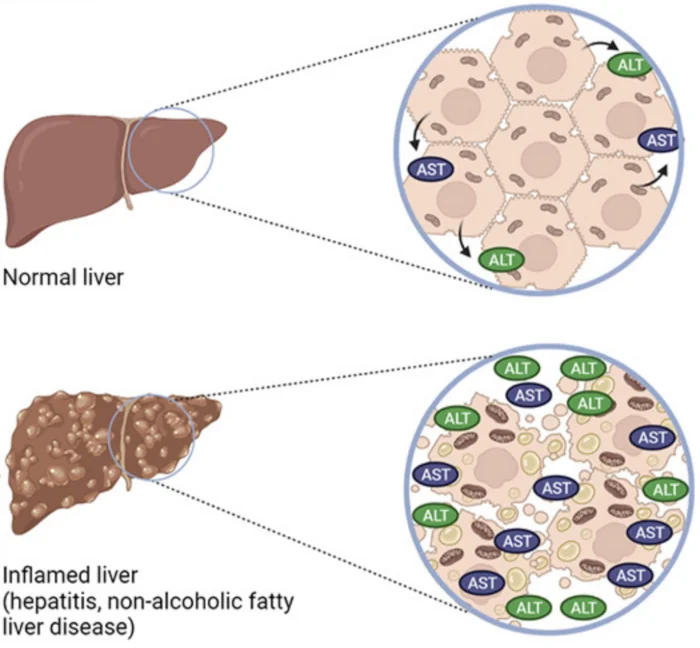Health 101: How to Live a long & healthy life by Dr. Peter Attia
Dr. Peter Attia, founder of Early Medical and a prominent figure in longevity medicine, advocates for a proactive approach to health, focusing on early detection and intervention for chronic diseases. His philosophy is encapsulated in identifying and mitigating the "Four Horsemen of Chronic Disease": heart disease, cancer, neurodegenerative diseases (like Alzheimer's), and Type 2 diabetes/metabolic dysfunction. He emphasizes that metabolic dysfunction, though not always a top cause of death, significantly increases the risk of the other three. This holistic perspective underscores the importance of specific biomarkers and a comprehensive approach to exercise and diet for extending healthy lifespan.
I. Combating Chronic Disease: The Four Horsemen & Key Biomarkers
Dr. Attia identifies four major chronic diseases he calls the "Four Horsemen": heart disease, cancer, neurodegenerative diseases (e.g., Alzheimer's), and Type 2 diabetes/metabolic dysfunction. He posits that metabolic dysfunction, despite its lower ranking in direct mortality, is a crucial precursor, significantly elevating the risk of the other three. Early detection and intervention, often through blood tests, are paramount for delaying or preventing these conditions.
A. Peter Attia's Top 5 Blood Tests for Early Detection
These tests primarily aim to screen for the Four Horsemen, allowing for early intervention.
-
Lipoprotein (a) (Lp(a)-P) Test:
- Purpose: Measures Lp(a), a fat-protein combination that transports cholesterol, indicating arterial health and metabolic issues based on the cholesterol hypothesis. It's crucial for diagnosing heart conditions and evaluating vascular disease risk, especially atherosclerosis.
- Indications: Particularly important for individuals with a history of heart disease, high LDL cholesterol, or a family history of cardiovascular issues.
- Procedure: Standard fasting blood draw (8-12 hours).
- Optimal Range: NIH recommends . Attia prefers measurements in nanomoles per liter (nmol/L) for better risk estimation.
- Stability & Intervention: Lp(a) levels are relatively stable and don't require frequent measurement. Early knowledge of risk is key. Supplements like L-carnitine, CoQ10, and Xuezhikang (XZK) may help lower Lp(a) long-term.

-
LDL-P (or ApoB) Test:
- Purpose: Measures low-density lipoprotein particles (LDL-P) or Apolipoprotein B (ApoB), which transmit LDL-Ps. High levels signal unhealthy cholesterol that forms arterial plaques, even if standard lipid panels are normal.
- Indications: Prescribed when standard lipid panels are insufficient for precise cardiovascular disease risk assessment or show inconsistent results.
- Procedure: Simple blood draw; does not require fasting.
- Optimal Ranges: ApoB ; LDL-P . Levels above ApoB 110 mg/dL or LDL-P 2000 nmol/L indicate high risk.
- Intervention: Diet is a primary regulator. Omega-3 rich foods/supplements are beneficial. Attia personally avoids trans fats and consumes abundant vegetables and fiber-rich foods.

-
Oral Glucose Tolerance Test (OGTT):
- Purpose: Measures the body's insulin response and how sugar is absorbed by cells, providing a critical assessment of metabolic health. Abnormal results indicate severe metabolic changes and increased risk of diabetes and cardiovascular disease.
- Procedure: Comprehensive 8-12 hour fasting test. Baseline blood sample is drawn, followed by consumption of a glucose-only substance. Blood samples are then drawn every 30 minutes for 2 hours to measure insulin.
- Risk Indication: Blood glucose levels above 200 mg/dL at the two-hour mark are suggestive of diabetes.
- Intervention: Lifestyle changes are key. Reducing carbohydrates effectively decreases insulin resistance, and regular exercise improves insulin processing.

-
ALT Test (Alanine Transaminase):
- Purpose: Assesses liver health by measuring ALT, an enzyme found in the liver. Elevated ALT levels in the blood indicate liver cell injury, often due to fat storage in the liver, signaling a metabolic problem.
- Indications: Consider urgent testing with extensive alcohol consumption, family history of liver/metabolic issues, obesity, or diabetes.
- Procedure: Standard liver panel requires 10-12 hours fasting; separate ALT draw usually does not.
- Normal vs. Optimal Ranges: Most labs consider 7 to 55 U/L as normal. Attia suggests stricter optimal ranges for early detection: for males and for females.
- Intervention: Improving liver health, primarily through dietary changes. Foods/supplements rich in Vitamin B9 (dark green vegetables, beans, whole grains), Vitamin E (peanuts, avocados, pumpkin), and coffee are beneficial.

-
APOE Genotype:
- Purpose: Determines the combination of APOE gene alleles (ε2,ε3,ε4), which are involved in lipid metabolism and influence the risk of Alzheimer's disease (AD) and cardiovascular disease. APOE is considered a "conductor" of the peripheral circulation system.
- Indications: Prescribed for adults with dementia symptoms (memory loss, disorientation) or a strong family history of severe Alzheimer's.
- Procedure: One-time, non-fasting blood draw, as the genotype is permanent.
- Risk Interpretation: Results indicate AD risk based on allele combinations (e.g., ε3/ε4 implies 2.3 times higher risk, ε4/ε4 implies 14.9 times higher risk compared to average).
- Intervention: An APOE4 diagnosis provides a proactive opportunity for prevention strategies (e.g., through dedicated online forums like APOE4 forums).
II. Peter Attia's Longevity Lifestyle: Diet & Exercise
Dr. Attia's personal health strategy emphasizes a dynamic approach to diet and a structured exercise regimen aimed at maximizing "healthspan" – the number of healthy, active years, particularly into older age.
A. Evolving Dietary Philosophy
Attia's diet has evolved, prioritizing muscle mass and body fat reduction for longevity.
-
Current Diet Goals (as of Feb 2025):
- Increase muscle mass.
- Reduce body fat.
-
Current Strategy:
- Protein Intake: 1 gram of protein per pound of body weight (approx. 2.2 grams per kg).
- Calorie Intake: calories per day.
- Tracking: Uses Layne Norton's "Carbon" app for protein and calorie tracking.
- Typical Daily Intake: Around 45-50 grams of protein four times daily. Example meals: 8 eggs (4 whole, 4 whites) with toast/butter for breakfast; protein shake; chicken salad for lunch; varied dinner.
- Supplements: Continues to take supplements like Omega-3s and magnesium.
- Carbohydrates: Considered "fair game" as long as protein and calorie targets are met, moving away from strict carbohydrate restriction.
-
Past Dietary Phases:
- Time-Restricted Feeding (TRF) (circa 2014-2020):
- Rules: Fasted 14-22 hours daily, consumed calories in a tight window (afternoon/evening), avoided sugars, high-fructose corn syrup (HFCS), and junk food, but had no restriction on healthy starches and vegetables.
- Meals: Often one large meal per day (~3,000 calories), typically a combination of a large salad, a rotating protein (salmon, pork, steak, game meat), and a serving of carbohydrates (rice, potatoes, sweet potato).
- Water Fasting (within 2014-2020 TRF period):
- Benefits (research-backed): Decreased visceral fat, increased cellular cleanup (autophagy), lowered IGF-1, decreased blood glucose and insulin.
- Previous Protocol (until end of 2019): 7 days ketogenic diet pre-fast, 7 days water-only fast, 7 days keto post-fast (done quarterly).
- Current Protocol (as of 2020): 3-day water-only fast once per month, without strict keto before or after. This shift made fasting more sustainable and captured key metabolic changes.
- Supplements during fasting: Continues magnesium (slow-absorbing form), methylated B vitamin complex. Stops EPA/DHA, Rapamycin (due to natural mTOR inhibition from fast), and Metformin (if previously taking). Sodium supplementation (e.g., via bouillon) may be beneficial for those not regularly fasting.
- Ketosis Years (circa 2011-2014):
- Followed a 100% ketogenic diet for three years.
- Despite moving away from it, Attia maintains high confidence in its efficacy, noting it was a period of peak leanness, mental, and physical fitness with excellent biomarkers.
- Time-Restricted Feeding (TRF) (circa 2014-2020):
B. The Four Pillars of Longevity Exercise
Attia transitioned from extreme athletic training to an exercise philosophy optimized for longevity, aiming to be "kick-ass at 100." His approach is built on four integral components, acknowledging that exercise cannot compensate for poor sleep or nutrition, but can significantly enhance overall health.
-
Zone 2 Training (Moderate Cardio):
- Definition: Exercise at a blood lactate level of 1.7 to 2 mmol/L, or just below the point where sustained conversation becomes impossible.
- Protocol: 45 minutes on a bike (stationary or outdoors) on Tuesdays, Thursdays, Saturdays, and Sundays. Saturdays may include an anaerobic element.
-
Strength Training:
- Definition: Enhancing a muscle's capacity to generate force, which improves overall efficiency and health outcomes (general health, mental health, social functioning).
- Protocol: Four days a week, alternating between upper and lower body splits (e.g., Monday lower, Wednesday upper).
- Focus: Emphasizes compound lifts (squats, deadlifts, hip hinging movements like hip-thrusters, kettlebell swings), upper body pulling movements (pull-ups, rows), and grip strength (dead hangs, finger-tip pull-ups, weighted carries like farmer carries).
- Integration: If cardio and strength training overlap, cardio is done first. Strength training days are prioritized. Recommended resource: Mark Rippetoe's "Starting Strength."
-
VO2 Max Training (Intense Cardio):
- Definition: Training to improve peak aerobic capability—the maximum rate at which the heart, lungs, and muscles effectively use oxygen. Critical for maintaining independence with age, as VO2 max declines.
- Protocol: Typically on Saturdays. Examples include 4 minutes on/4 minutes off on a rowing machine, or 1 minute on/2 minutes off on a stairmaster, for 20-30 minutes. Exercise at 90-100% of max heart rate, with sufficient rest between intervals (not HIIT).
- Measurement: Standard lab tests measure oxygen and CO2 output on a treadmill or bike.
-
Stability Exercises:
- Definition: The body's ability to efficiently handle and transmit force, addressing weak stabilizer muscles and poor movement patterns that cause injuries. Considered a "foundational pillar."
- Protocol: Daily 10-minute sessions.
- Methods: Attia prefers Dynamic Neuromuscular Stabilization (DNS), which retrains natural movement patterns. Pilates and postural exercises are also effective.
C. Training Best Practices & Recommendations
- Minimum Effective Training Dose: For those starting without exercise, Attia recommends a weekly program: 1 hour Zone 2, 1 hour strength training, one 20-30 minute VO2 max session, and 30-40 minutes of stability training spread across the week (ideally 10 minutes daily).
- Recommended Equipment: Adjustable-weight dumbbells, kettlebells (16-24kg for women, 24-32kg for men), resistance bands, TRX suspension straps.
- Injury Prevention: A one-size-fits-all approach is ineffective. Work with a movement therapist to address nagging injuries early, as they can escalate and limit strength development. For serious injuries, seek discerning care from qualified physiotherapists.
References
- 1Lipoprotein A – Khashayar Farzam and S. Senthilkumaran | 2022 | StatPearls
- 2Dietary Natural Products as Emerging Lipoprotein(a)-Lowering Agents – Amir Abbas Momtazi-Borojeni et al. | 2019 | Journal of Cellular Physiology
- 3Dietary, Macronutrient, Micronutrient, and Nutrigenetic Factors Impacting Cardiovascular Risk Markers Apolipoprotein B and Apolipoprotein A1: A Narrative Review – Gregory S Nacarelli et al. | 2023 | Nutrition Reviews
- 4Effect of Low-Carbohydrate Diets on Cardiometabolic Risk, Insulin Resistance, and Metabolic Syndrome – Blair J. O’Neill | 2020 | Current Opinion in Endocrinology & Diabetes and Obesity
- 5A Comparison of the Impact of Exercise Training With Dietary Intervention Versus Dietary Intervention Alone on Insulin Resistance and Glucose Regulation in Individual With Overweight or Obesity: A Systemic Review and Meta-Analysis – Mousa Khalafi et al. | 2022 | Critical Reviews in Food Science and Nutrition
- 6Outlive: The Science and Art of Longevity – Peter Attia with Bill Gifford | 2023 | Harmony
- 7The Role of Vitamins in Non-Alcoholic Fatty Liver Disease: A Systematic Review – Rose Anne M. Abe et al. | 2021 | Cureus
- 8Coffee as Chemoprotectant in Fatty Liver Disease: Caffeine-Dependent and Caffeine-Independent Effects – Jonathan A. Dranoff | 2023 | Gastrointestinal and Liver Physiology